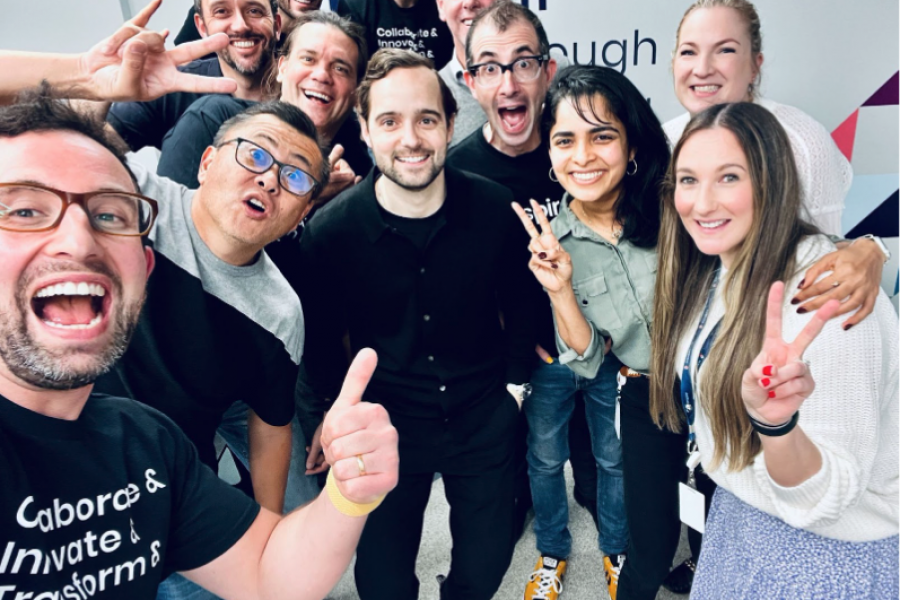With the energy industry moving towards more renewable options that afford greater consumer empowerment, AGL Energy is constantly looking to innovate with its products and services.
But whenever a high-profile business like AGL wants to launch something new, novel or never-seen-before, there is bound to be a number of unknowns that need clarifying; questions that need answering.
The same can be said for its solar battery strategy. Research had told AGL that an increasing number of solar customers were choosing to buy batteries, with one million residential storage systems set to be installed in NEM (the National Electricity Market) by 2030.
Not only did this represent a huge commercial opportunity, it also closely aligned with its sustainability mission to deliver “affordable, reliable, lower-carbon and innovative energy solutions for all of our customers, including those experiencing financial hardship.”
But in order to successfully launch a home battery scheme that customers wanted, AGL needed to uncover barriers, motivations, behaviours and attitudes towards solar storage, energy management, government subsidies and co-management.
Transpire performed one simple activity to provide AGL with the confidence it needed to move forward – design thinking.
What is design thinking?
“Design thinking allows organisations to build products with confidence,” says Transpire Head of UX Amir Ansari. “Insights are gathered, validated with users and rapidly prototyped before any production commences.
“Ultimately, design thinking ensures that you arrive at an innovative product concept that is desired by users, technically feasible and commercially viable.”
When performed correctly, design thinking can:
- Reduce costs.
- Reduce risk.
- Create opportunities for expansion.
- Create winning products, happier customers and a differentiated position in the market.
What activities did our design thinking for AGL involve?
Our design thinking for AGL’s solar battery strategy adopted a mixed-method research approach comprising both qualitative and quantitative research.
Qualitative Research
Objective
To delve deeper into the why that underpins behaviours and attitudes regarding solar panel and battery acquisition in Adelaide, South Australia.
Methodology
Semi-structured, face-to-face interviews in the homes of real customers to uncover themes in a naturally-elicited conversation. Instead of working through an explicit list of questions, this would leave room for unexpected follow-on topics for more powerful insights.
Quantitative Research
Objective
To further substantiate insights from qualitative research with a large sample size, which represents sentiment on a national scale.
Methodology
Identify a panel of users that met the brief and send them a survey that would take approximately eight minutes to complete. By asking questions that covered key themes concerning solar batteries, we could either confirm or deny previously-held hypothesis.
How our design thinking helped AGL go to market
Transpire’s five-week research project into solar battery sentiment provided AGL with numerous recommendations going forward, all of which allowed for greater confidence because:
- Many ideas were explored and validated.
- Questions around commercial viability were answered.
- There was alignment around its solar battery strategy.
“Our approach allowed for divergent thinking and the rapid generation of ideas followed by a convergence and consolidation of the best ones,” added Amir. “AGL benefitted from a depth of research and findings, breadth of possible solutions and ultimately, a clear roadmap to development, product release and beyond.”
As a result of Transpire’s design thinking, AGL was able to fine-tune its product offering, which would make home batteries more affordable.
Customers in Adelaide would be able to receive up to $7,000 towards the upfront cost of a new battery, consisting of a payment of $1,000 from AGL when connecting their battery to the VPP (Virtual Power Plant) and a subsidy of up to $6,000 from the South Australian Government.
“This new offer helps customers to unlock more value from their significant investments in solar energy systems and to increase their use of solar energy to help lower energy bills,” AGL General Manager Distributed Energy Dominique Van Den Berg said.
“The launch is consistent with our objective of delivering smart solutions to meet the growth in customer demand for residential batteries.”
Why choose design thinking from Transpire?
Transpire has applied design thinking to various projects for some of Australia’s leading enterprises including AGL, Virgin Australia, Telstra and more.
While each project’s parameters will vary, our approach is often packaged as a design sprint, which follows five key phases to:
- Align – distil material and narrow focus.
- Ideate – apply divergent thinking to ideate.
- Decide – on the most feasible and desirable solution.
- Design – prototype the solution ready for validation.
- Validate – the solution with representative users and customers.
We’ll then document our findings and provide a roadmap for the future or recommend the next steps you should take.
So, if you need more confidence in your product offering or clarity around what customers really want, get in touch with us today.









